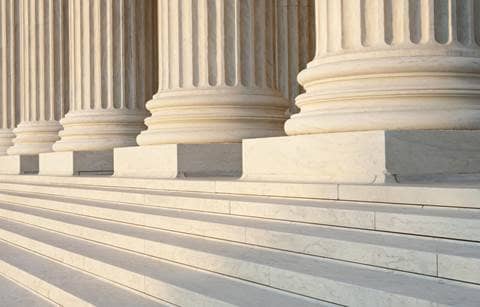A recent Brownfield Redevelopment Financing Act (Act 381 of 1996) amendment has made $1 billion available for "transformational" projects creating a new subsidy for catalytic projects.
For years, Michigan’s Brownfield redevelopment act has provided a financial subsidy to promote the development of brownfield properties. In particular, it allows municipalities to capture incremental property taxes generated by a development to reimburse the developer for “eligible activities” — things like demolition, lead or asbestos abatement, site preparation, and infrastructure improvements —pursuant to an approved brownfield plan on eligible property. To be eligible, properties must have been a "facility,” historic resource, functionally obsolete, or blighted."
An expanded definition of eligible activities
Under the new legislation, the definition of eligible activities is greatly expanded for projects with an approved transformational brownfield plan (TBP) to include “demolition, construction, restoration, alteration, renovation or improvement of buildings or site improvements including infrastructure improvements that directly benefit the eligible property,” per the amendment. To qualify as a transformational project, the plan must integrate some combination of retail, office, residential, or hotel uses.
New sources of tax capture funding
The additional subsidy made available by the Act 381 amendment is funded by new sources of tax capture:
- Construction period tax capture — Michigan income tax levied and imposed upon wages paid to individuals physically present and working within the eligible property during the construction period, excluding employees of the owner/developer.
- Income tax capture revenue — Up to 50 percent of Michigan income tax levied on individuals domiciled within the eligible property in excess of initial income tax value of individuals domiciled within the property at the time the property was added to the TBP.
- Withholding tax capture revenue — Up to 50 percent of Michigan income tax withheld on individuals employed within the eligible property in excess of initial income tax value of individuals employed within the property at the time the property was added to the TBP.
Local income taxes can also be captured, to the extent they are paid by residents and/or businesses located in a Renaissance Zone — if the owner requests approval from the state and local government to forego the local income tax exemption.
Capturing state and local income tax is a new concept in Michigan, and undoubtedly, there will be a learning curve. For developers, one of the more challenging aspects of the program could be getting contractors and commercial tenants to cooperate by providing information about their employees. Developers should consider incorporating provisions into their construction contracts and commercial leases to require contractors and tenants to provide such information.
Projects included in a TBP are also exempt from sales and use taxes on construction materials. However, they are not eligible for Community Revitalization Program (CRP) funding.
Application, underwriting, and fees
All TBPs are subject to approval by the Brownfield Redevelopment Authority (BRA), local government, and Michigan Strategic Fund (MSF). Projects must have a transformational impact on local economic development and community revitalization based on the extent of brownfield redevelopment and growth in population, commercial activity, and employment that will result from the plan.
A project’s award can't exceed the amount necessary to make the project economically viable, and the MSF has adopted underwriting guidelines to evaluate TBP applications, which include:
- Owners must have an equity investment in the project of at least 20 percent of total development costs, the net of developer, or consulting fees. Deferred fees will not be counted in the calculation.
- The project’s debt service coverage ratio must exceed 1.20 to 1.00.
- The owner’s leveraged cash-on-cash return cannot exceed 15 percent over a 20-year investment horizon.
Before the BRA makes any reimbursement or payment to developers, the parties —including the MSF — must execute a written development and reimbursement agreement. The MSF must approve an assignment or transfer of the development and reimbursement agreement.
Nonrefundable application and amendment fees run $30,000 for TBPs requesting awards of less than $1.5 million and $130,000 for TBPs requesting awards of more than $1.5 million. The $130,000 fee covers mandatory third-party economic impact and underwriting analysis. Regardless of the size of the project, the MSF charges an annual administrative fee of 0.375 percent of TBP awards.
Caps and investment thresholds
The TBP subsidy is subject to two statewide caps and some further stipulations:
- Income and withholding tax capture cannot exceed $800 million in total or $40 million annually. No single project can receive more than 25 percent of such funds. Capture for each project is limited to 20 years, which must begin within five years of the TBP’s approval.
- Construction period tax capture and sales/use tax exemptions cannot exceed $200 million.
The number of TBP awards are limited, and minimum investment thresholds apply:
- Only five projects can be approved statewide each calendar year. Unused approvals can be carried forward through 2022.
- Each municipality is limited to five projects through 2022.
- Minimum investment depends on population, as outlined in the table below.
| Population | Communities | Investment |
| ≥600,000 | Detroit | $500,000,000 |
| 150,000 - 599,999 | Grand Rapids | $100,000,000 |
| 100,000 - 149,999 | Warren, Sterling Heights, Lansing, Ann Arbor, and Flint | $75,000,000 |
| 50,000 - 99,999 | Click for list | $50,000,000 |
| 25,000 - 49,999 | Click for list | $25,000,000 |
| <25,000 | Click for list | $15,000,000 |
The minimum size for a county TBP is based on the combined population of the municipalities with projects included in the plan.
The limitations can be waived for projects in which:
- Rehabilitation of a “historic resource” would not otherwise be economically feasible
- Developments in small communities (< 25,000) would not be feasible otherwise
- MSHDA has approved expenditure of federal blight elimination funds in the area
- The municipality is subject to a state of emergency for drinking water contamination (currently, Flint).
No more than 65 percent of approved TBPs can be in communities with a population of more than 100,000. MSF is reserving 15 percent of TBP funding — $150 million — for projects in communities with a population of less than 100,000.
The amendment to Act 381 was intended to eliminate feasibility issues for redevelopment projects that will truly transform a community or neighborhood. Developers undertaking such projects should feel free to contact us to help them determine if this new subsidy may be the solution to otherwise insurmountable financial hurdles.





